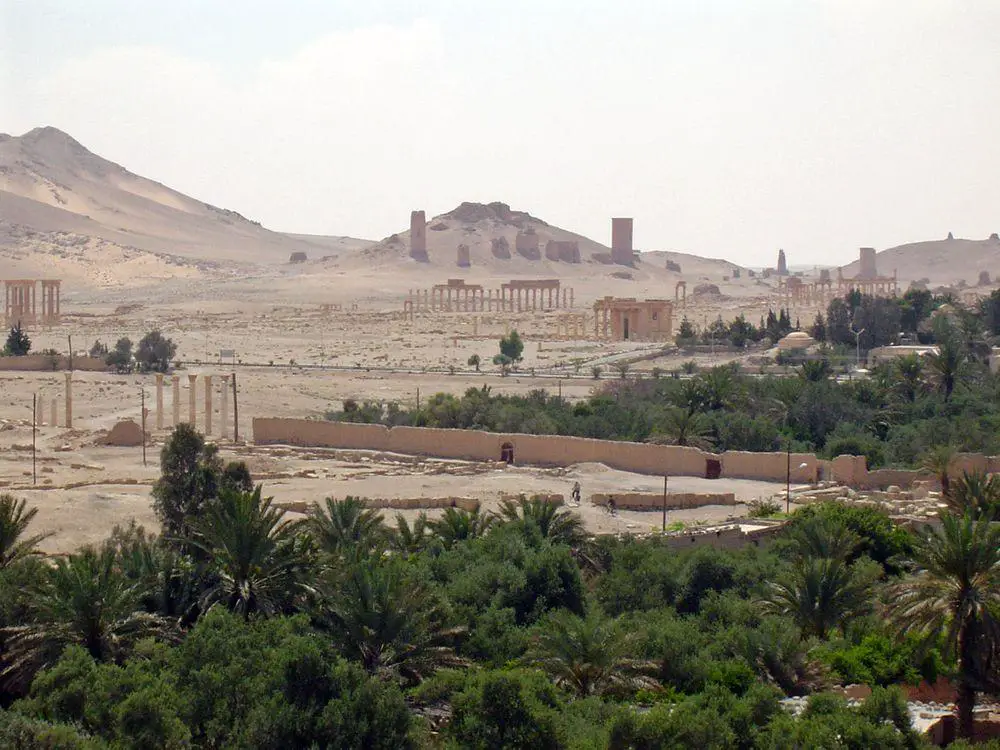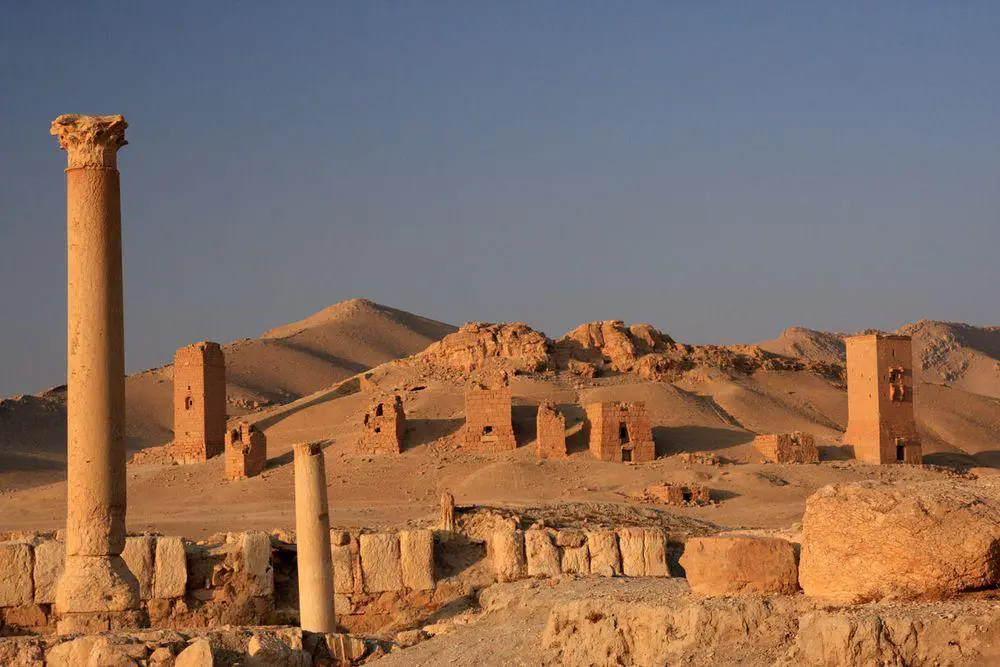Ancient cities and towns 🢔 Settlements 🢔 Archaeological wonders 🢔 Categories of wonders
Wonder
Palmyra
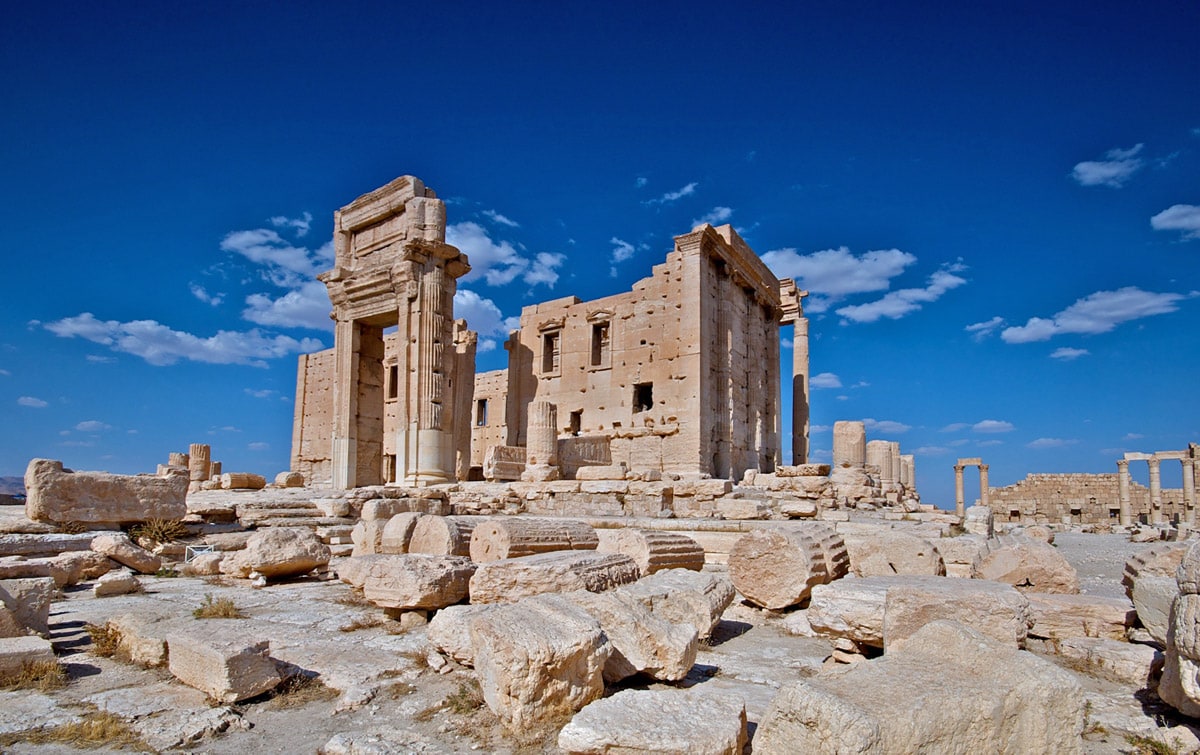
 In short
In short
One of the richest and most sophisticated cities of antiquity was Palmyra. Today one can only imagine what impression this beautiful city left on caravans after a long walk through the desert.
 51.3%
51.3%
GPS coordinates
Name in Arabic
Alternate names
Founded
Abandoned
UNESCO World Heritage status
Map of the site
If you see this after your page is loaded completely, leafletJS files are missing.
 In detail
In detail
Unfortunately the events in 2015 show that at least a part of humankind has managed to go backward in its development by many millennia. Palmyra has been invaded by ISIS and the unique cultural heritage was deliberately eliminated. These are dark times in this part of the world.
History
Beginnings
Palmyra is a very old settlement that developed in an oasis in the central part of the Syrian Desert. No one can tell when it was established – but the first time in written sources it was mentioned sometime around 1800 BC on clay tablets found in another ancient city – Mari.
Oldest known inhabitants of the city were Aramaic people and the original name of the city – Tadmor – in Aramaic means "undefeatable town". The current name – Palmyra – might originate from the Greek language, but its origin is unclear.
Palmyra is mentioned also in Bible and Talmud – according to Bible it was built by King Solomon.
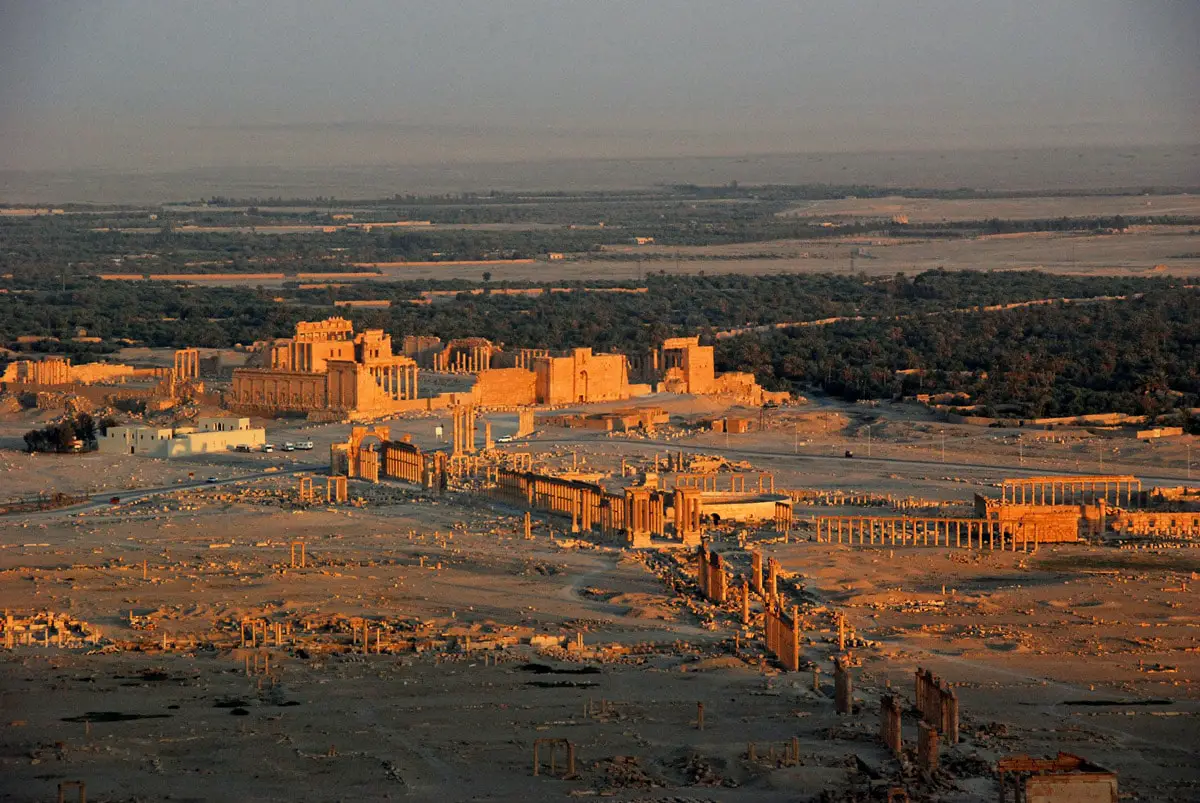
Free Hellenic city
Conquest by Alexander the Great (around 330 BC) changed the course of history in the Levant. Soon his empire was divided and Palmyra became an independent city in the Seleucid Empire – Hellenistic successor of Alexander’s empire.
In this time – the 4th – 3rd century BC – Palmyra was established caravan city of great importance, increasingly rich and sophisticated.
Roman Arabia
By the 1st century BC Palmyra was one of the main links in the trade between Persia and the Roman Empire. Palmyra controlled the silk trade with India, the city had its own fleet in the Mediterranean and was one of the richest cities in the ancient world.
At this time Palmyra was seen as a part of the Roman world, albeit economically independent.
Formally this prosperous city was included in the Roman Empire, province of Arabia by Emperor Trajan (second half of the 1st century AD). Palmyra became more and more influential and in 129 AD it was declared to be a free city by emperor Hadrian. It was the most important caravan city in Roman Empire.
By this time Palmyra developed a distinct style in architecture and art by fusion of local, Greek, Roman, and Persian influences. The city had an active social life and its own intellectuals and higher society.
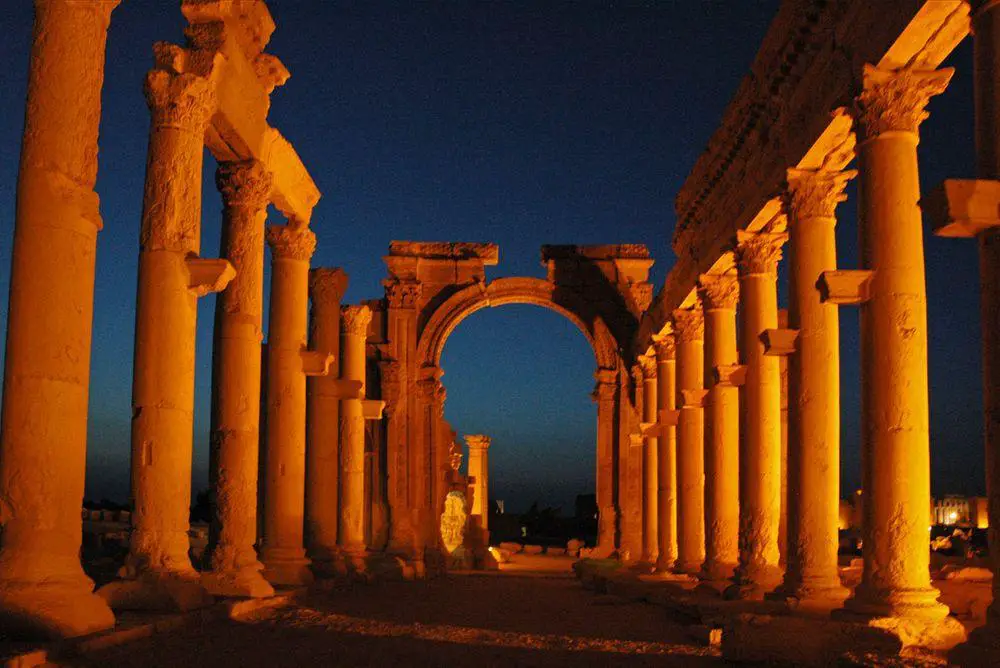
Palmyrene Empire
In the second half of the 3rd century ruler of Palmyra Odaenathus started a military campaign in order to regain control of trade routes (Persians took the ports in Mesopotamia). These campaigns initially were supported by Romans as this helped to spread the influence of the Roman Empire.
Odaenathus managed to push back Persians, forces of Palmyra twice reached Ctesiphon – the capital of Persia.
When Odaenathus was assassinated, throne was taken by his second wife – Septimia Zenobia.
Zenobia was one of the most outstanding personalities in the history of the ancient world. She was gorgeous, well-educated, and righteous. Zenobia knew many languages, including the ancient Egyptian language, she had deep interest in Egyptian culture and admired it.
The young ryler of Palmyra soon became an empress – armies of Palmyra managed to take Egypt (269 AD), part of Minor Asia and almost whole Levant, and part of Mesopotamia. This was a direct attack on Roman Empire.
Return of Roman Empire
Empire responded with a full force – and soon after, in 274 AD Palmyra was taken by Roman legions and walls of the city were torn down.
Zenobia was captured and brought to Rome. According to some legends, she became a well-known socialite in Rome after this.
Golden age of Plamyra was over – but the city successfully lived on for centuries to come.
Romans in the times of Diocletian (284 – 305) built a lot – the city was extended, here were housed many legions and new city walls were built – Palmyra was preparing for a standoff with Sassanid Empire. In Byzantine times some churches were built here but most of the city in this period was in ruins.
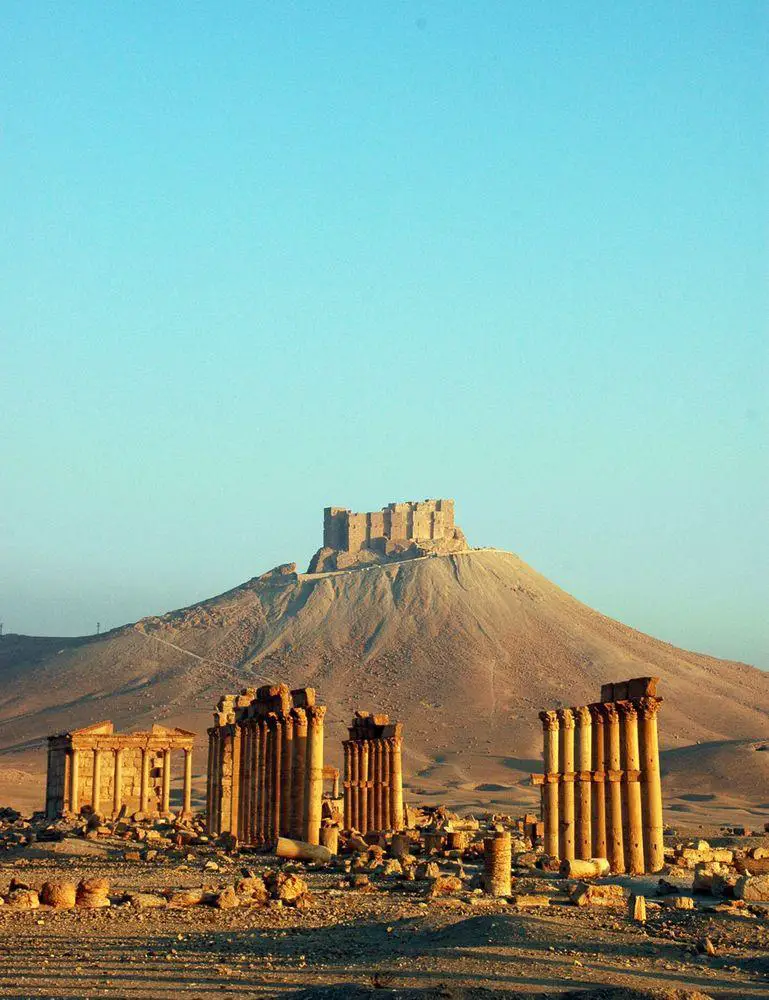
Arabs
In 634 AD the city was captured. This was not done by the old rival – Sassanid Empire. A new force was raised in Near East: tribes of Arabs united for the first time and were successful in fights both against the Sassanid and Byzantine empires. Palmyra was taken by one of the most successful Arab warriors – Khalid ibn al-Walid, a companion of Prophet Muhammad.
Happily, the city was left intact. It continued to be an important trade city. In 1401 it was captured by Timur – but, again, the decline was short, and later, in the 15th century, it again was a splendid, prosperous trade city.
Abandonment
In the times of the Osmanic Empire, after the 16th century Palmyra was almost fully abandoned. Since then in its ruins dwelled some families, but the last people were dislodged from here in 1929.
Ruins of the city were rediscovered by travelers in the 17th and 18th centuries. These romantic remnants of a once-powerful city in the middle of the desert to a large extent influenced the architecture and art in Europe. It was one of the key stimuli in the development of Neo-Classical architecture and innovations of European urban planning.
Description
Location
Palmyra was built in an oasis, in the middle of the desert. From all sides, this splendid city was surrounded by barren, dry deserts and mountains. At first, this might seem to be an impossible location for one of the most sophisticated cities of antiquity, but one should look not locally but regionally: Palmyra happened to be in the middle of regional trade routes including the legendary Silk Road.
Significant structures
- Temple of Ba’al was located in the east of city. This was the most impressive structure in the city, 205 by 210 m large. Temple was one of the most important religious structures in the Middle East in the first century CE. Originally it was built as a Hellenistic temple but just a few remains of the original building. In the 1st century AD there was built a new central shrine and a little later – other parts. Temple was deliberately eliminated by ISIS in the summer of 2015.
- Great Collonade of Palmyra might be the most recognisable landmark of Palmyra. It was the main, representative street of the city which was built in the 2nd – 3rd century AD. Both sides of the street in approximately 1 100 m long segments are adorned with numerous columns. The collonade starts with an opulent arch, which was built in the early 3rd century AD. Several more streets in Palmyra have been adorned with columns.
- Roman Theater is an enormous structure that was built at the beginning of the 1st century AD. It is located at the Great Collonade.
- Senate, Tariff Court, and some more administrative buildings have been preserved near the theater. Tariff Court most likely was the place where caravans paid a tax to the city. The city had also an agora (central place) and triclinium – banquet room.
- Camp of Diocletian is a large complex of buildings some 600 m northeast of the theater. It was built in the late 3rd century AD, when, after the suppression of the Palmyrene Empire, in the city was housed the Roman legion.
- Temple of Allāt is located at the western end of Collonade. It was built in the 2nd century AD and is devoted to Allāt – the once-important Arabian goddess.
-
Palmyra Castle (Fakhr-al-Din al-Ma’ani Castle) was built on the top of hill some 1.7 km north-west of the Roman Theatre and the whole city more than 100 m below can be overseen from it. This is medieval castle that was built in the 13th century by the Mamluks.
- Valley of Tombs is located to the west from the city. This is an enormous cemetery with numerous beautiful monuments of art and architecture. Some tombs are below the ground, in many have been preserved rich decorations. The oldest funerary structures here are the funerary towers – multistorey structures built by the richest families of Palmyra. Best known is Tower of Elahbel.
Palmyra has many more structures – remnants of a Roman aqueduct, ruins of four Christian churches, and numerous apartment buildings.
 Linked articles
Linked articles
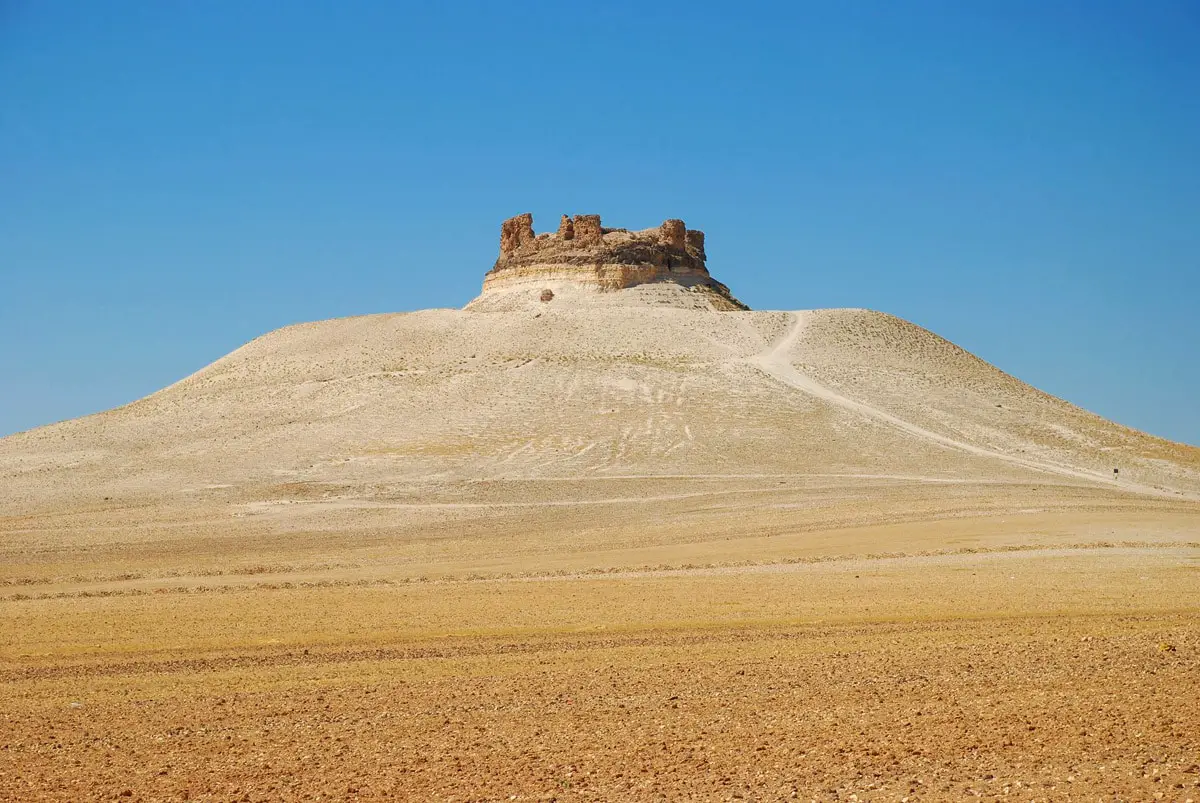
Wonders of Syria
The sands in Syria most likely hide many secrets that one day will tell how civilization started on Earth. Throughout millennia in this country appeared and disappeared many cities, some persist up to this day, some are in ruins but many are covered with sand. Here are found some of the oldest fortifications, palaces, castles, and some of the oldest Christian churches.
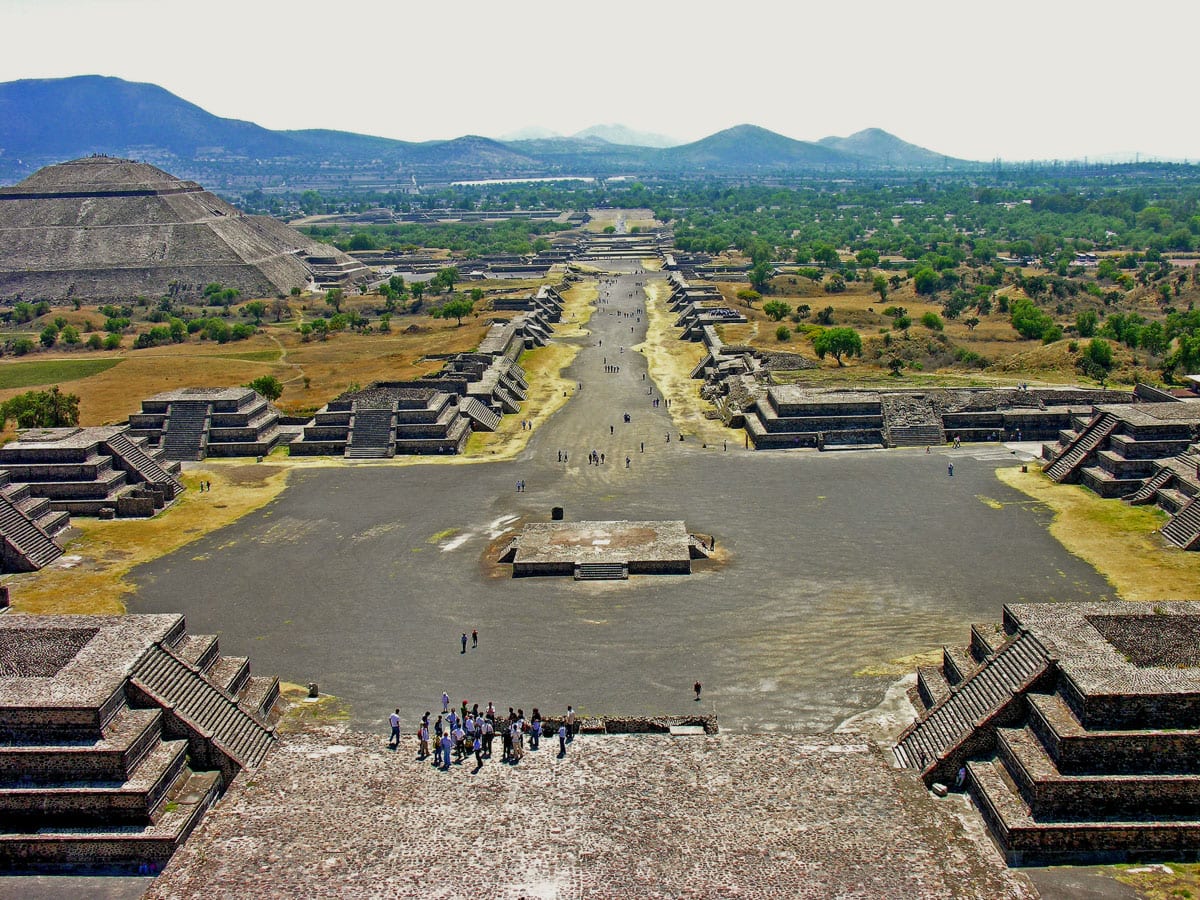
Ancient cities and towns
It turns out that urban planning is a very old profession. The urban fabric of ancient settlements – their structure and evolution gives a lot of food for thoughts about the nature of humans and civilization.
Wondermondo includes in the category of ancient cities and towns those settlements which have developed as urban areas at least 1500 years ago: around 500 AD.

Abandoned cities and towns
The main impression created by abandoned cities is intimate. This is a mixed feeling of sadness, unclear anxiety (“my city will not be eternal either”), and at the same time – inspiration from the abilities of our ancestors. Long ago, without electricity, paper, or different mechanisms, they managed to create magnificent structures, that covered many square kilometers.
 Recommended books
Recommended books
Palmyra: An Irreplaceable Treasure
Located northeast of Damascus, in an oasis surrounded by palms and two mountain ranges, the ancient city of Palmyra has the aura of myth. According to the Bible, the city was built by Solomon. Regardless of its actual origins, it was an influential city, serving for centuries as a caravan stop for those crossing the Syrian Desert. It became a Roman province under Tiberius and served as the most powerful commercial center in the Middle East between the first and the third centuries CE.
Palmyra
One of the great tragedies of the twenty-first century has been the rise of religious intolerance and the disrespect of other faiths that have been associated with it. Around the world, bias, bigotry, religious venom, and violence have led to the wanton destruction of sacred shrines across the planet. Nowhere has this intolerance been as virulent as in the Middle East, which is the heart and soul of the three great Western religious traditions of Judaism, Christianity, and Islam.

